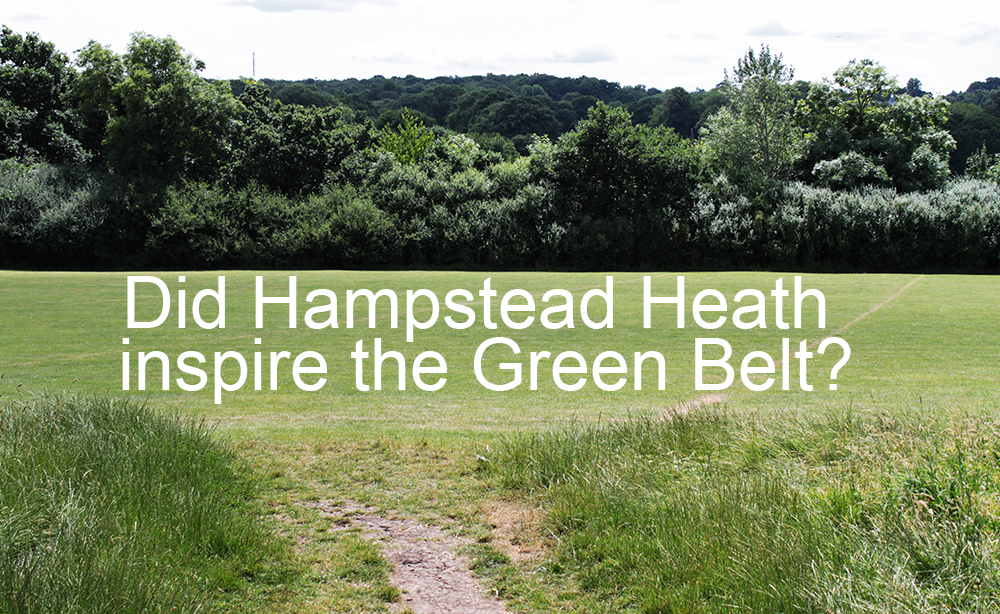Origins of the green belt idea
See also: blog posts about green belts

As a means of limiting the growth of cities, there are many possible origins for the green belt concept. But as a zone of greenspace providing fresh air, food, wood and recreational public goods for citizens, the probable origin is John Claudius Loudon’s Breathing Zone plan of 1829. Loudon wrote that: ‘A late attempt in parliament to enclose Hampstead Heath has called our attention to the rapid extension of buildings on every side of London, and to the duty, as we think, of government to devise some plan by which the metropolis may be enlarged so as to cover any space whatever with perfect safety to the inhabitants, in respect to the supply of provisions, water, and fresh air, and to the removal of filth of every description, the maintenance of general cleanliness, and the despatch of business. Our plan is very simple; that of surrounding London, as it already exists, with a zone of open country, at the distance of say one mile, or one mile and a half, from what may be considered the centre, say from St. Paul’s. This zone of country may be half a mile broad, and may contain, as the figure shows, part of Hyde Park, the Regent’s Park, Islington, Bethnal Green, the Commercial Docks, Camberwell, Lambeth, and Pimlico; and it may be succeeded by a zone of town one mile broad, containing Kensington, Bayswatcr, Paddington, Kentish Town, Clapton, Lime House, Deptford, Clapham, and Chelsea; and thus the metropolis may be extended in alternate mile zones of buildings, with half mile zones of country or gardens, till one of the zones touched the sea.‘ Ebenezer Howard advocated a very similar idea for London and called it a Country Belt. In the event Raymond Unwin’s term Green Belt was adopted. So, if this conceptual ancestry is correct, a threat to Hampstead Heath inspired the Green Belt Concept.
As discussed here, there is a danger of the green belt being treated more as a negative approach to stopping development than as a positive planning approach to improving a city’s stock of public goods. The solution is to ask landscape architects to carry out studies of how green belt amenities can be enhanced.
John Claudius Loudon did not invent the term ‘landscape architecture’ but he had a key role in its adoption by the profession: Loudon borrowed the term from Gilbert Laing Meason and used in his title for the collected works of the most important landscape theorist of the nineteenth century, The landscape gardening and landscape architecture of the late Humphrey Repton.
